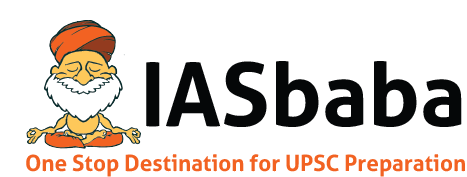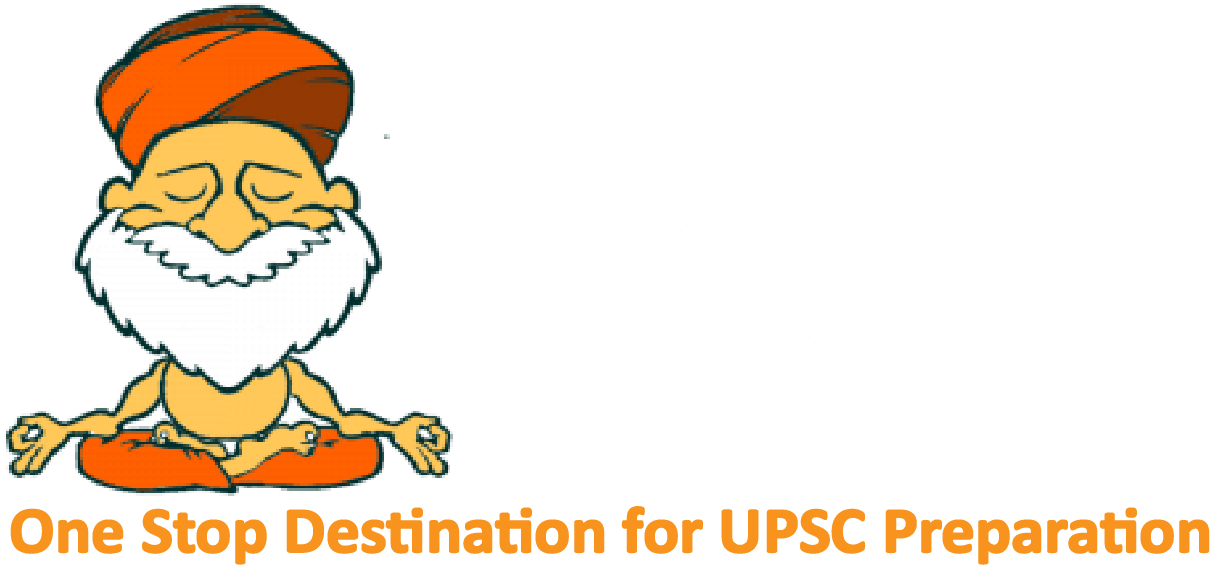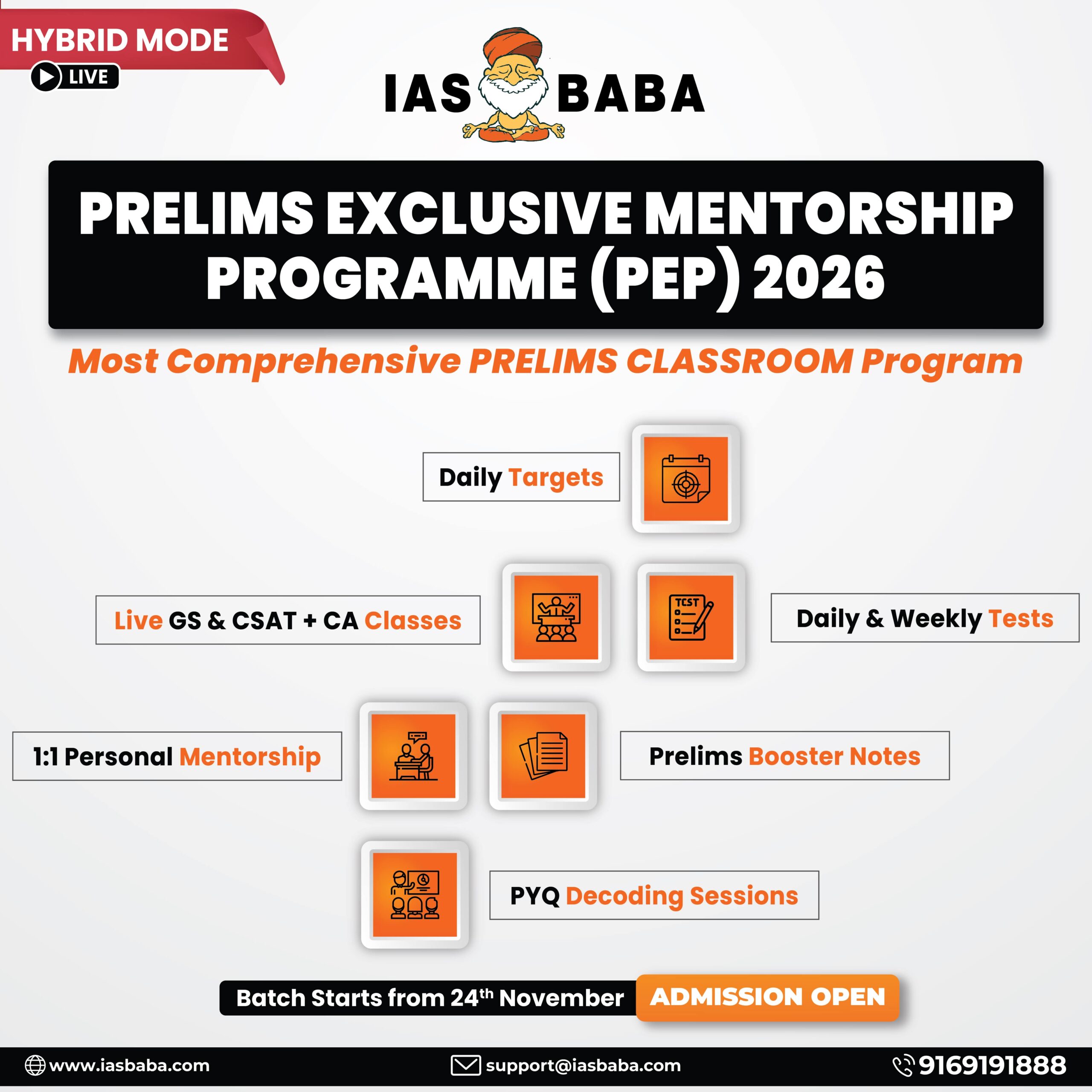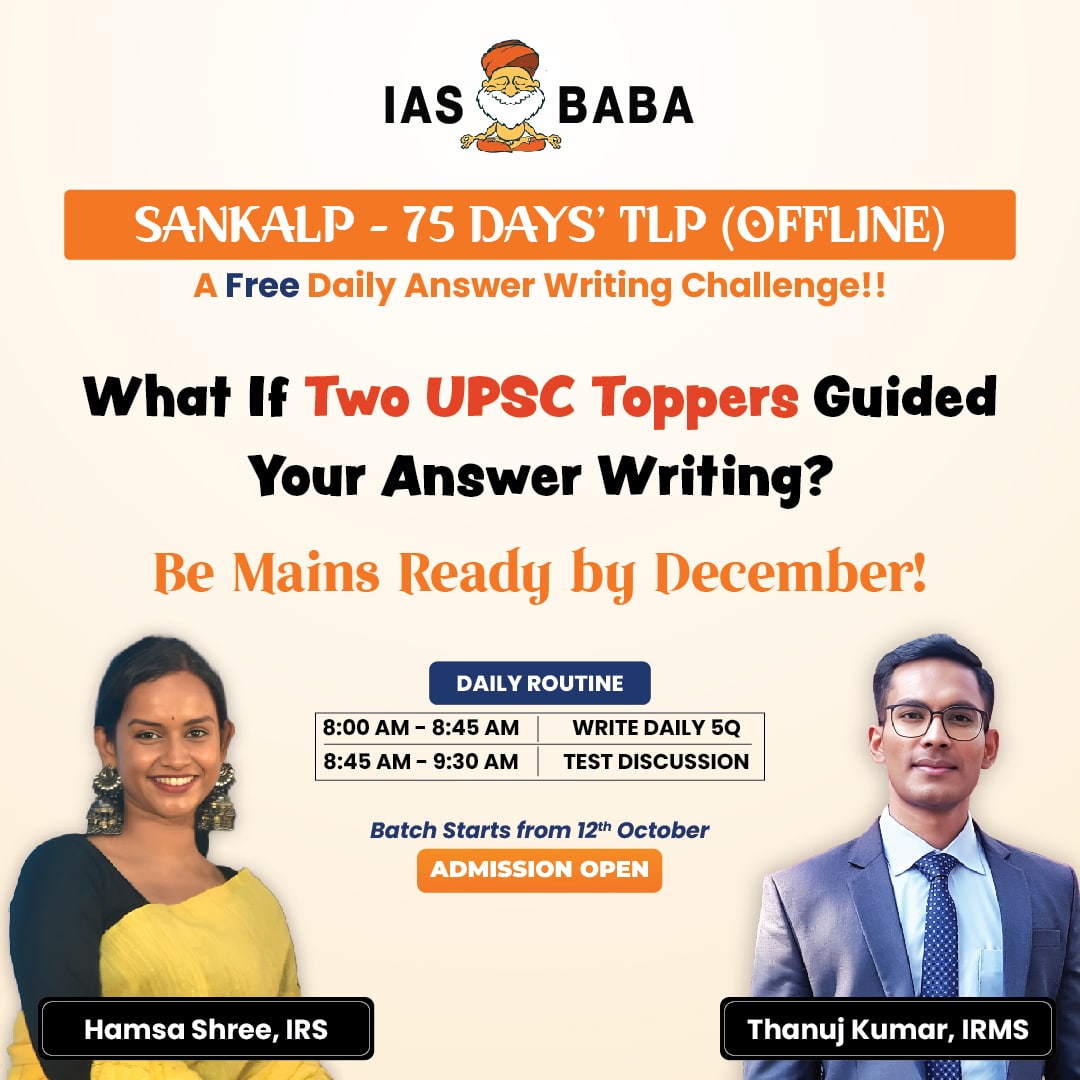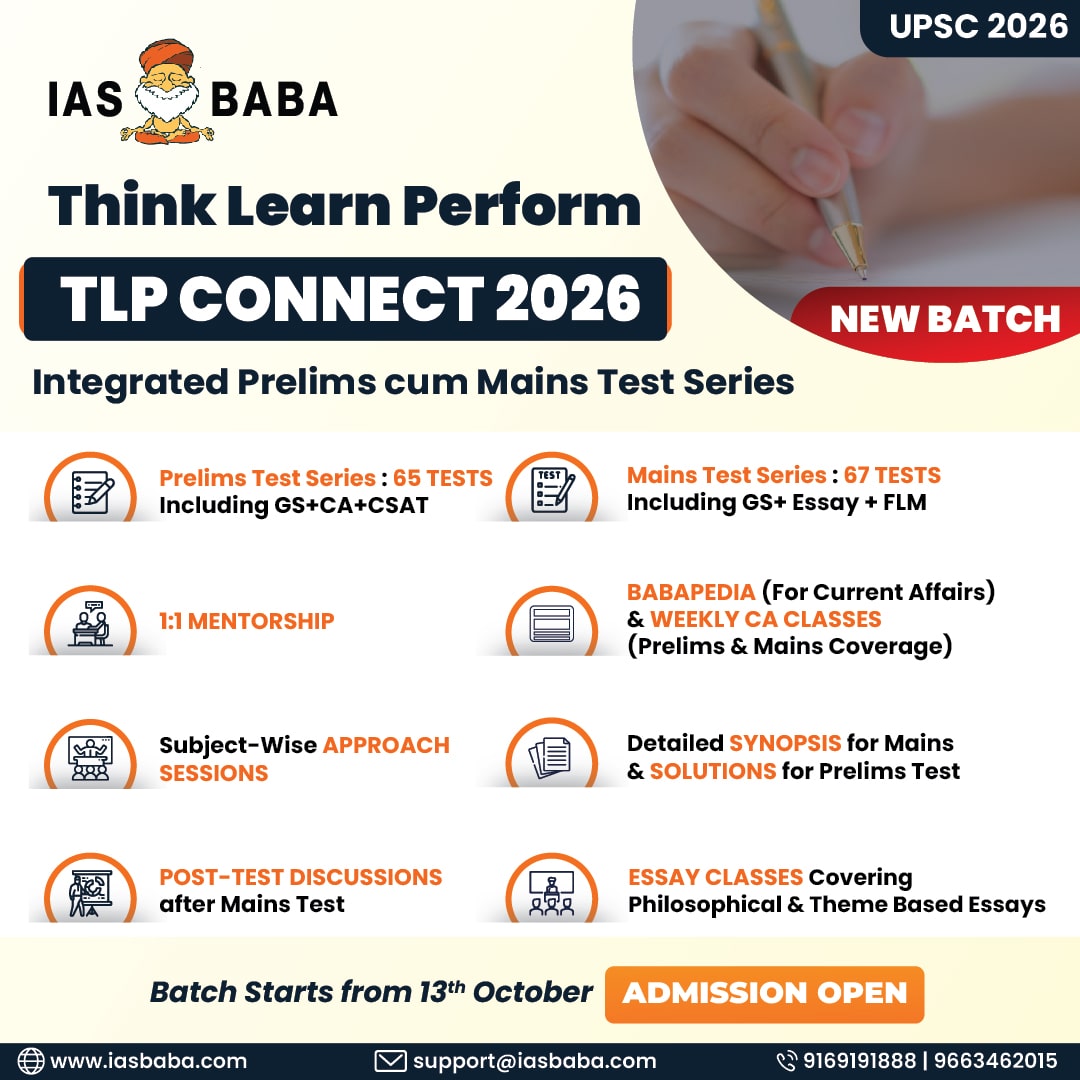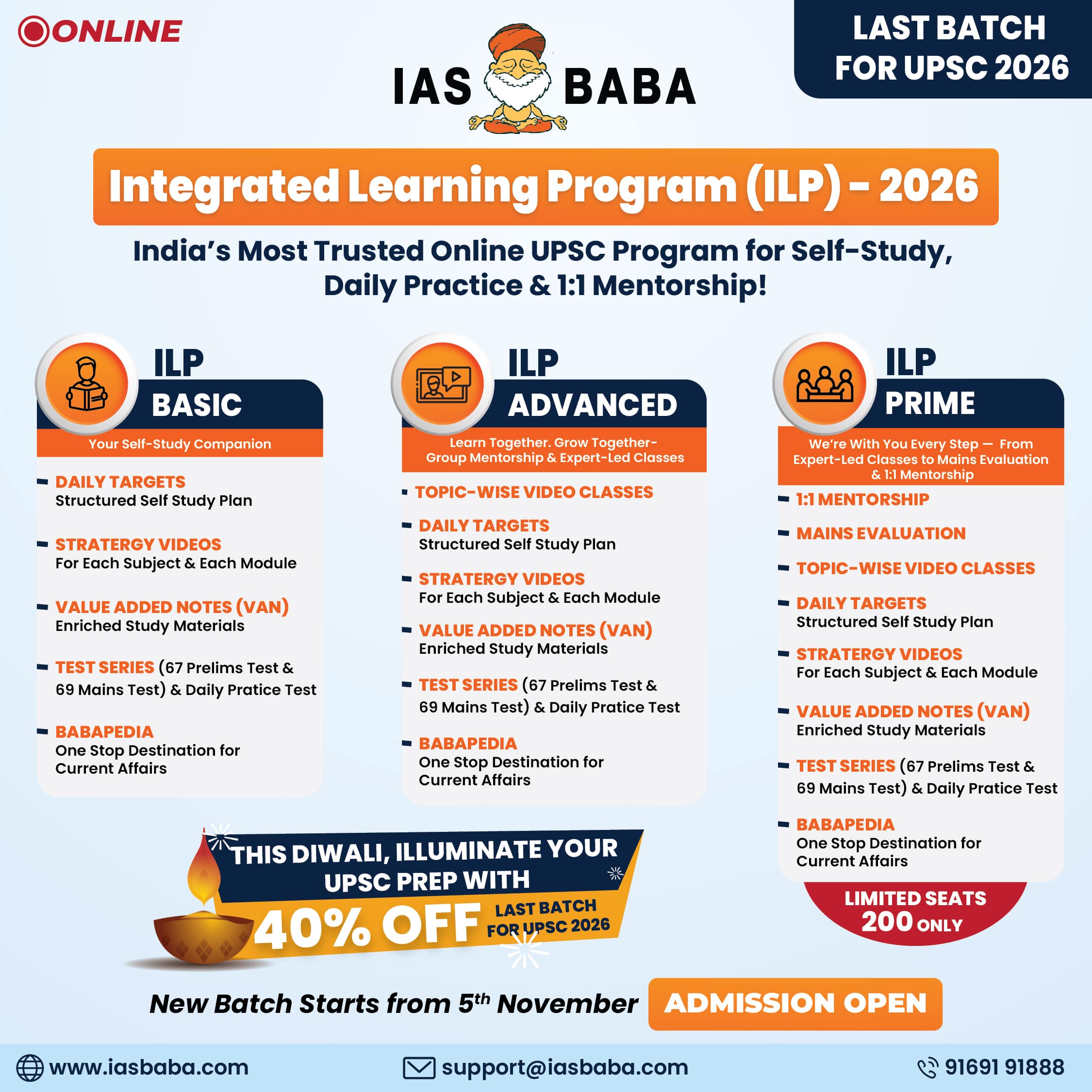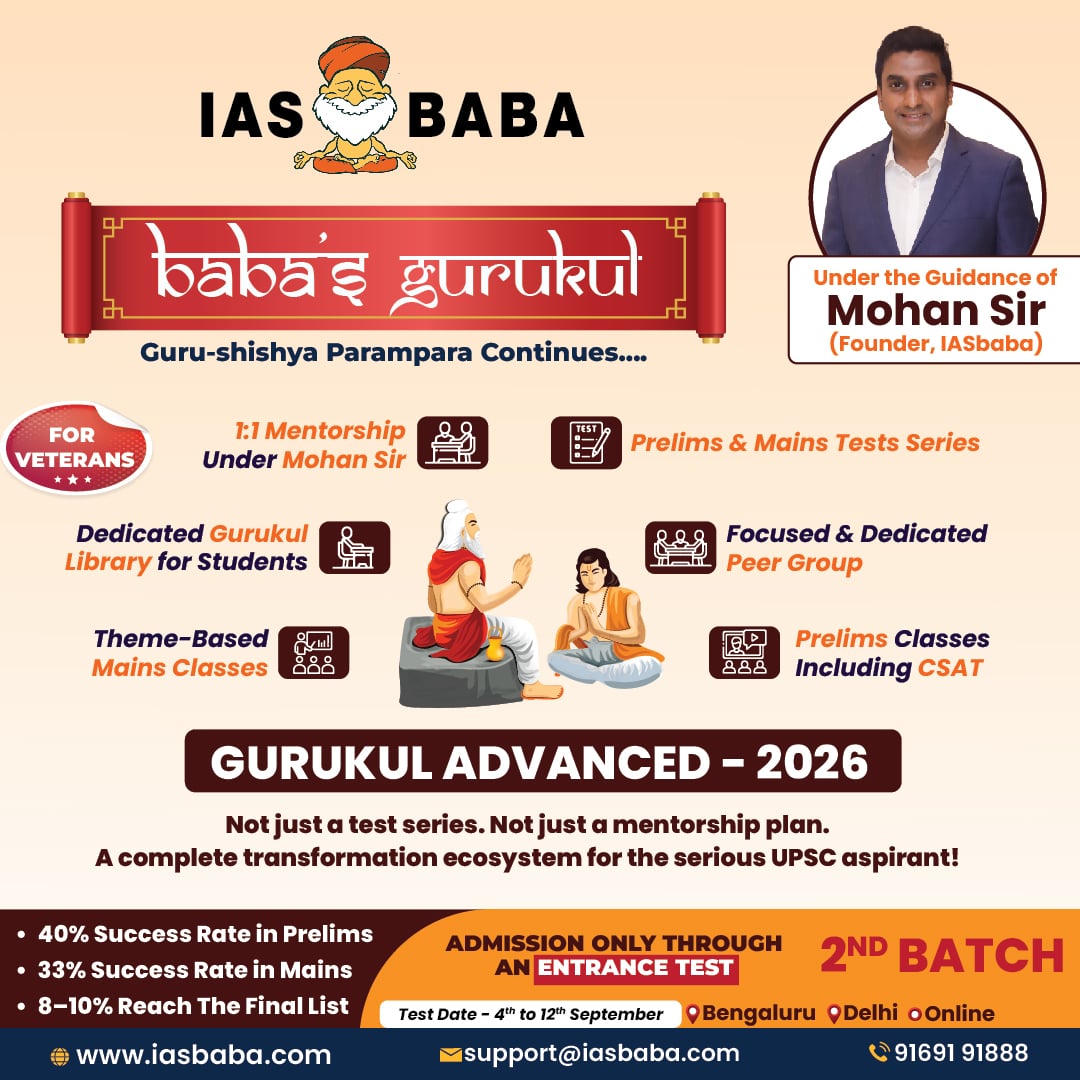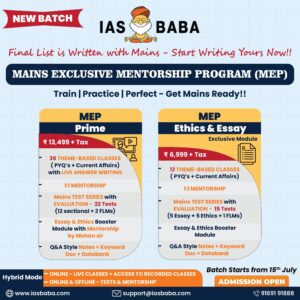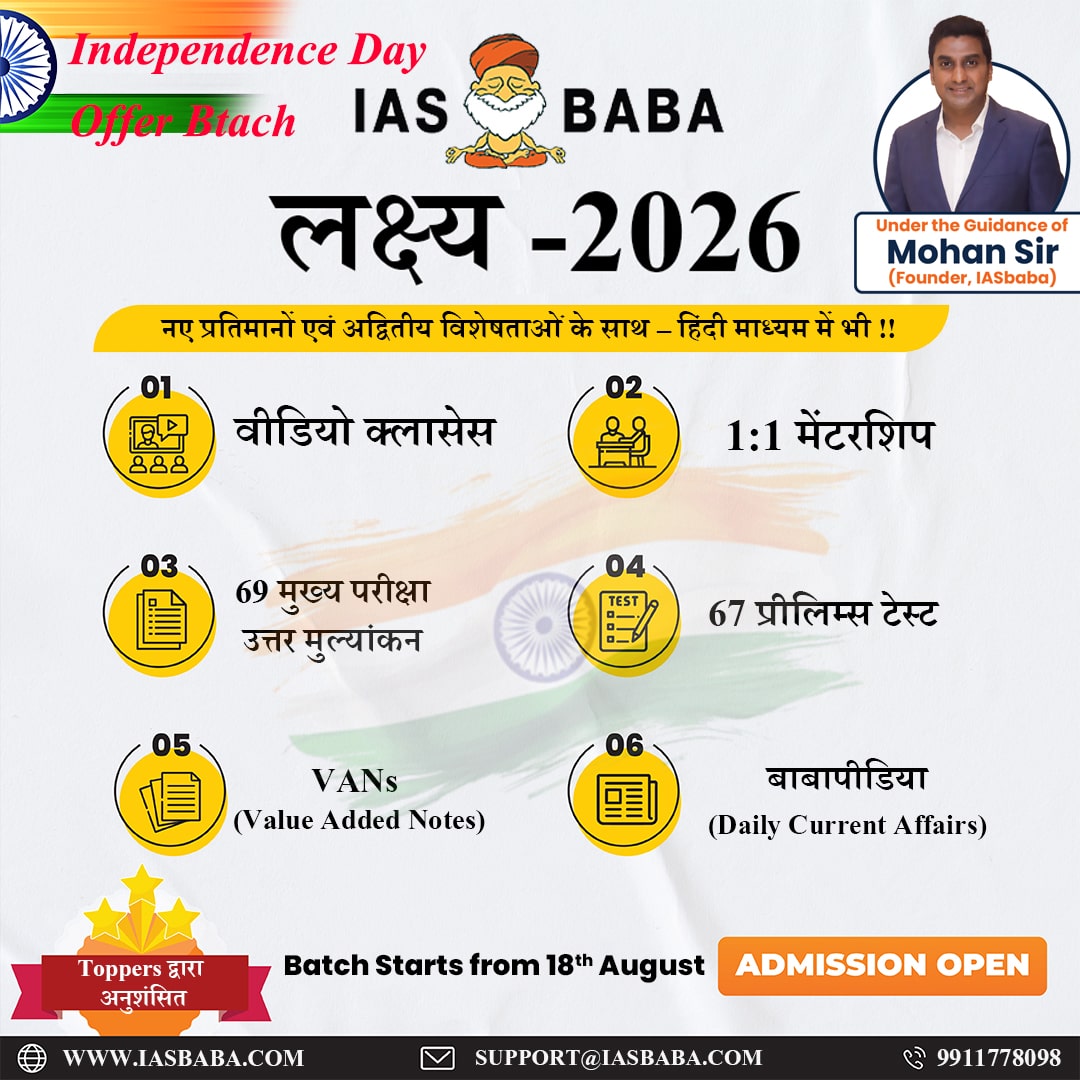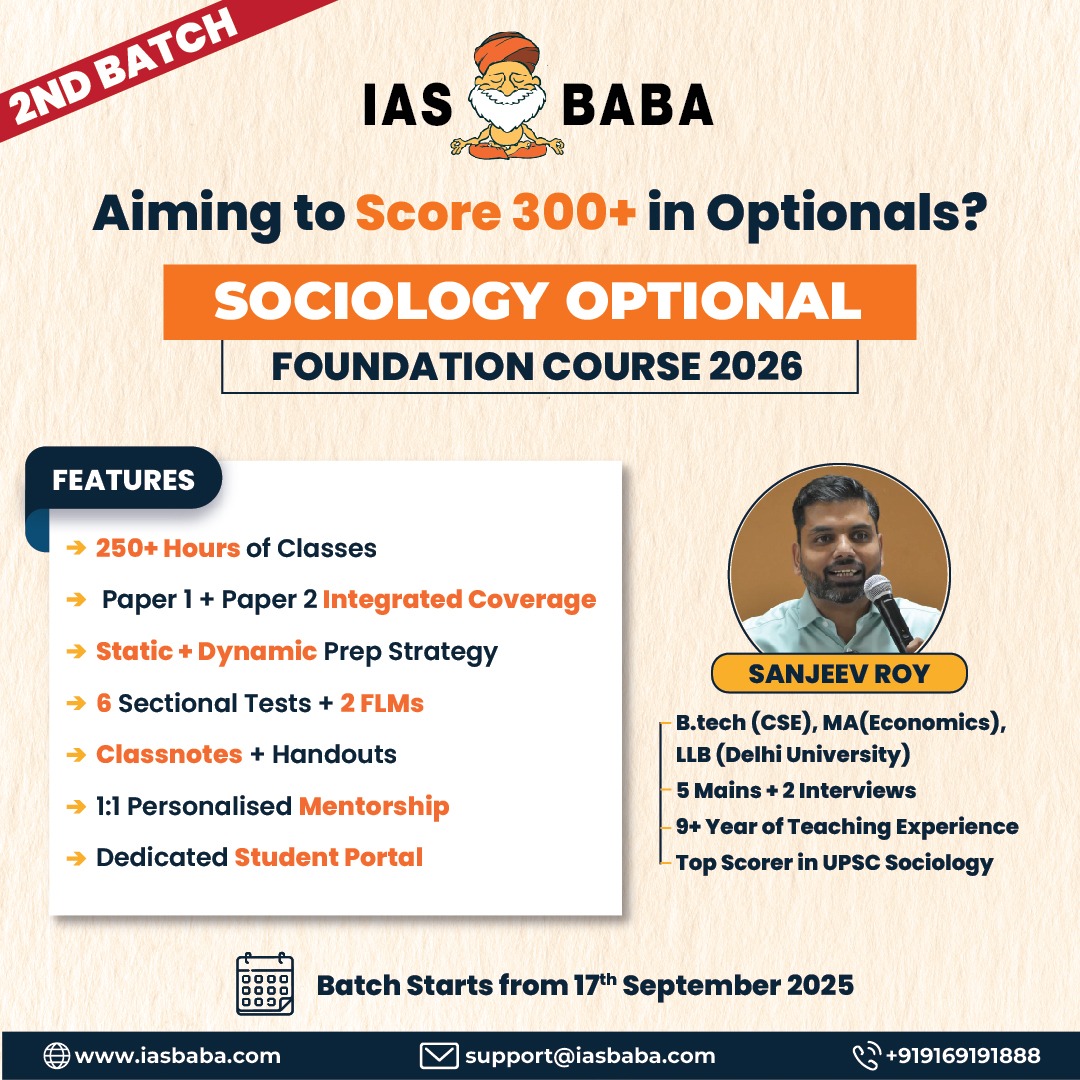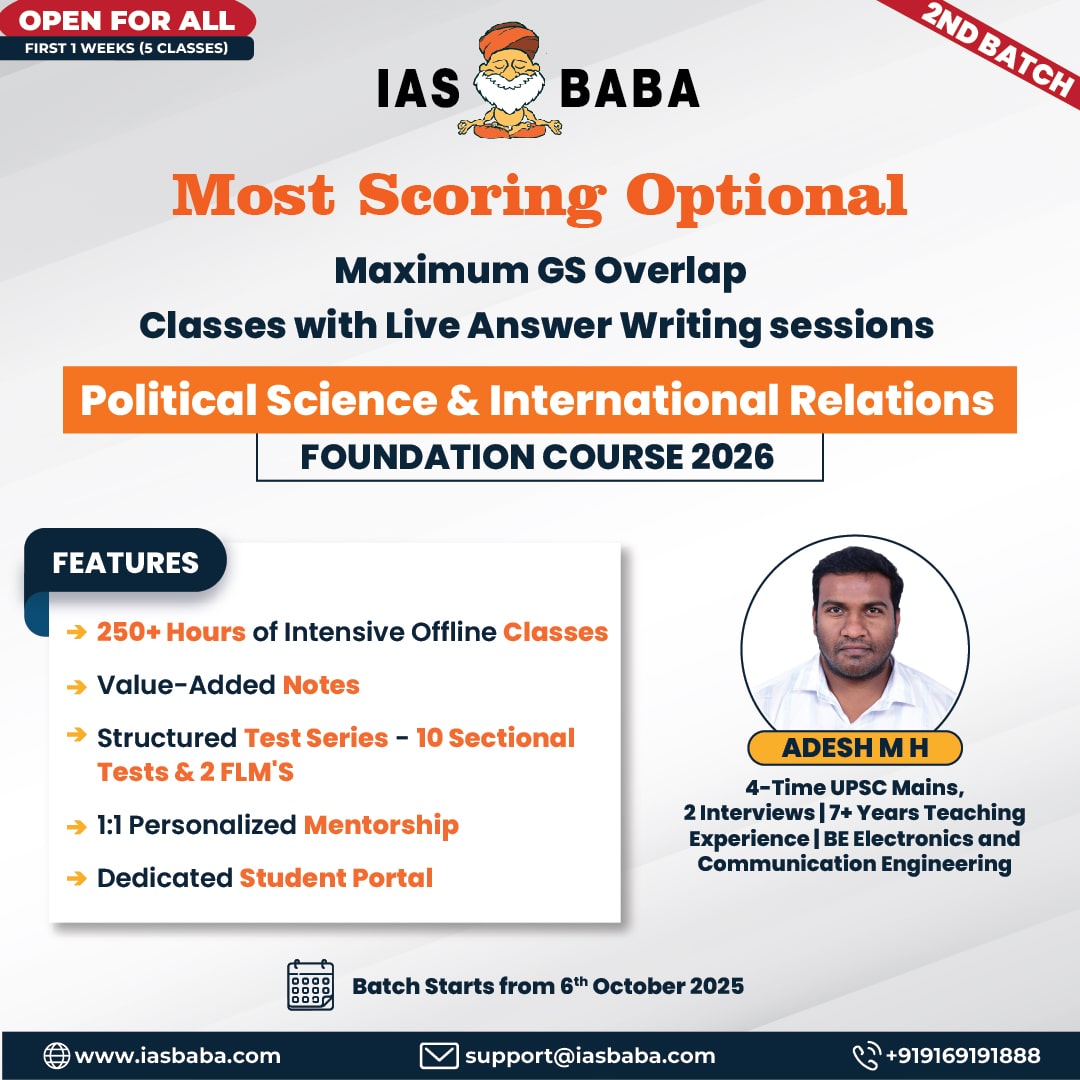IASbaba's Daily Current Affairs Analysis
Archives
(PRELIMS & MAINS Focus)
Category: POLITY
Context: The government has decided to hold a caste census along with the upcoming Census.
Decoding the context: The 2021 Census was delayed by the Covid-19 pandemic, and has been on hold ever since. The exercise is understood to be imminent, but there are no dates for it as yet
Learning Corner:
- The data collected in Censuses since 1951 include the numbers of individuals belonging to the Scheduled Castes (SCs) and Scheduled Tribes (STs), and of various religious denominations. But the members of caste groups other than SCs and STs have not been counted.
- The most recent caste data available is from the Census of 1931. The 1941 Census, carried out during the War, collected data on caste, but they were never released.
- Ahead of the first Census of independent India, the government chose to avoid the question of caste. Thereafter, demands for a caste census were repeatedly raised, especially by parties who had a base among Other Backward Classes (OBCs), primarily farming communities and artisans.
- But no Indian government ever carried out a full count of caste memberships.
From Census to SECC
- In 2010, Law Minister M. Veerappa Moily proposed including caste/community data in Census 2011.
- The Registrar General and Census Commissioner of India (RGI) rejected the proposal citing logistical difficulties.
- Objections Raised:
- Census involves enumeration (observational, non-verification based).
- Enumerators (mainly school teachers) are not trained to verify caste claims.
- Difficulties in accuracy, analysis, and data verification.
- Political Response: Due to pressure from UPA allies (e.g., RJD, DMK, JDU) and OBC MPs, a Group of Ministers (GoM) was formed under Finance Minister Pranab Mukherjee.
- Decision – In September 2010, the Union Cabinet approved a separate exercise: Socio-Economic and Caste Census (SECC) to be conducted after Census 2011.
- Timeline:
- SECC conducted: June–September 2011
- Population enumeration (Census): February–March 2011
- The data were published by the Ministries of Rural Development and Urban Development in 2016, but the caste data were excluded. The raw caste data was handed over to the Ministry of Social Justice and Empowerment, which formed an Expert Group under then NITI Aayog Vice Chairperson Arvind Panagariya for classification and categorisation. The data are yet to be made public.
Recent developments
- Of late, several state governments have sought to implement “quota within quota” by subcategorising OBCs based on their own caste censuses, calling them “surveys” because the Census is technically part of the constitutional mandate of the Centre.
- Earlier, on April 1, 2021, the constitutional body National Commission for Backward Classes had urged the government to collect data on the population of OBCs “as part of Census of India 2021 exercise”.
Source : Indian Express
Category: SCIENCE & TECHNOLOGY
Category: SCIENCE & TECHNOLOGY
Context: Researchers at the University of California, San Francisco (UCSF) have achieved a significant breakthrough in assistive technology for individuals with paralysis.
Decoding the context: They have developed a brain-computer interface (BCI) that allows a paralysed man to control a robotic arm simply by imagining the movements he wishes to execute.
Learning Corner:
- A Brain-Computer Interface (BCI) is a technology that enables direct communication between the human brain and an external device (such as a computer or prosthetic limb), bypassing traditional neural pathways.
How It Works:
- Neural signals (electrical activity in the brain) are detected using electrodes or implants.
- Signals are decoded using algorithms and converted into commands.
- These commands control external devices or software (e.g., moving a robotic arm, cursor movement).
Types of BCI:
- Invasive: Electrodes implanted directly into the brain (e.g., Neuralink).
- Semi-invasive: Electrodes placed on the surface of the brain.
- Non-invasive: EEG (Electroencephalography) caps worn on the scalp.
Applications:
- Medical: Restoring mobility in paralysis, aiding speech in locked-in syndrome.
- Military: Human-enhancement and drone control.
- Neuroprosthetics: Controlling robotic limbs, exoskeletons.
- Gaming & Communication: Mind-controlled interfaces.
Source : The Hindu
Category: ENVIRONMENT
Context: India has reportedly opposed the inclusion of a hazardous insecticide under the Stockholm Convention on Persistent Organic Pollutants, an international environmental treaty to protect human health and the environment.
Decoding the context: The insecticide, Chlorpyrifos, is a chemical linked to adverse effects on neurodevelopment, reduced birth size, lung and prostate cancer upon chronic exposure. Chlorpyrifos has been registered in India under the Insecticides Act since 1977. In 2016-17, chlorpyrifos was the most frequently used pesticide in India, accounting for 9.4 per cent of the total insecticide consumption, according to a report by the International Pollutants Elimination Network (IPEN).
Learning Corner:
- An international environmental treaty adopted in 2001, entered into force in 2004.
- Aims to eliminate or restrict the production and use of Persistent Organic Pollutants (POPs) — toxic chemicals that persist, bioaccumulate, and cause adverse effects to human health and the environment.
- Objectives:
- Protect human health and the environment from harmful POPs.
- Eliminate or restrict production and use of intentionally produced POPs.
- Reduce or eliminate releases from unintentional production.
- Ensure safe disposal and handling of POP waste.
- POPs are toxic chemical substances that:
- Persist in the environment for long periods.
- Bioaccumulate through the food web. POPs are lipophilic, which means that they accumulate in the fatty tissue of living animals and human beings.
- Travel long distances via air and water.
- Cause serious health issues — cancers, birth defects, immune & reproductive disorders.
Key Provisions:
- The Stockholm Convention lists chemicals in three annexes: Annex A lists chemicals to be eliminated; Annex B lists chemicals to be restricted; and Annex C calls for minimizing unintentional production and release of listed chemicals.
- Governance: Overseen by the Conference of the Parties (COP), with the Persistent Organic Pollutants Review Committee (POPRC) assessing new chemicals.
- The list is updated regularly (now includes 30+ chemicals).
- Parties must develop National Implementation Plans (NIPs).
India and the Convention:
- India ratified the Convention in 2006.
- In 2022, India banned the use of several additional POPs under the Environment (Protection) Act, 1986.
- National Centre for Sustainable Coastal Management (NCSCM) and Central Pollution Control Board (CPCB) are involved in implementation.
Additional information –
- The “Dirty Dozen” refers to the initial 12 persistent organic pollutants (POPs) identified in the Stockholm Convention, including:
- Pesticides: DDT, Aldrin, Endrin, Heptachlor, etc.
- Industrial chemicals: PCBs.
- By-products: Dioxins, Furans.
Other International Conventions dealing with POPs and Pesticides:
- Rotterdam Convention on the Prior Informed Consent (PIC) Procedure for Certain Hazardous Chemicals and Pesticides in International Trade.
- Aim to promote shared responsibilities in relation to importation of hazardous chemicals and contribute safe use.
- The Basel Convention on the Control of Transboundary Movements of Hazardous Wastes and their Disposal.
- Aims to protect human health and the environment against the adverse effects resulting from the generation, management, transboundary movements and disposal of hazardous and other wastes.
Source : Down To Earth
Category: INTERNATIONAL
Context: The U.S. once again placed India on its ‘priority watch list’, stating that New Delhi remains one of the world’s most challenging major economies for the protection and enforcement of intellectual property rights (IPRs).
Decoding the context: The U.S. Trade Representative’s (USTR) 2025 Special 301 report, an annual review of the global state of IPR protection and enforcement, said that over the past year, India has remained inconsistent in its progress on intellectual property protection and enforcement.
Learning Corner:
- Special 301 Report is an annual review by the U.S. Trade Representative (USTR) assessing global intellectual property rights (IPR) protection and enforcement, mandated under Section 301 of the U.S. Trade Act of 1974.
- First published in 1989; evaluates over 100 trading partners.
- Classification in the Report:
- Priority Foreign Country: Worst classification; may face sanctions (e.g., Ukraine, 2013).
- Priority Watch List: Serious IPR concerns; intense bilateral engagement (e.g., India, China, 2025).
- Watch List: Notable IPR issues; requires monitoring (e.g., Brazil, Vietnam, 2025).
Source : The Hindu
Category: ART & CULTURE
Context: Prime Minister Narendra Modi remembered the profound wisdom of Jagadguru Basaveshwara on the occasion of Basava Jayanthi.
Decoding the context: In a social media post, Mr Modi said his vision for society and his tireless efforts to uplift the marginalised continue to guide people.
Learning Corner:
- Basavanna was a 12th-century philosopher, statesman, poet, and social reformer from Karnataka.
- Minister in the court of Kalachuri King Bijjala I (Kalyani Chalukya Dynasty).
- He introduced a new public institution Anubhava Mantapa (or, the “hall of spiritual experience”),which welcomed men and women from all socio-economic backgrounds to discuss spiritual and mundane questions of life.
- Revered as the founder of the Lingayat (Veerashaiva) sect.
Philosophy & Teachings
- Advocated monotheism through worship of Ishtalinga (personal Shiva emblem).
- Rejected caste system, ritualism, temple-centric worship, and Brahmanical dominance.
- A strong promoter of ahimsa, he also condemned human and animal sacrifices.
- Emphasized Kayaka (work ethics) and Dasoha (selfless service).
- Promoted gender equality and upliftment of marginalized communities.
Literary Contributions
- Composed Vachanas — short, powerful poetic expressions in Kannada, promoting devotion and ethics.
- Used vernacular language to make spirituality accessible to common people.
Legacy
- Inspired social reform and a non-Brahminical religious movement in Karnataka.
- Lingayatism remains a major religious community in Karnataka today.
- Commemorated with Basaveshwara Statue near the Thames, London (2015) — unveiled by PM Narendra Modi.
Source : News On AIR
Practice MCQs
Q1. With reference to Basavanna, the founder of the Lingayat movement, consider the following statements:
- He rejected temple worship and Brahmanical rituals.
- He propagated his philosophy through Kannada vachanas.
- He promoted the Varna-based division of society.
Which of the statements given above is/are correct?
- 1 and 2 only
B. 1 and 3 only
C. 2 and 3 only
D. 1, 2 and 3
Q1. With reference to the “Special 301 Report”, consider the following statements:
- It is released annually by the World Trade Organization to monitor global trade practices.
- India has been consistently placed in the Priority Foreign Country category.
- The report primarily evaluates the protection and enforcement of intellectual property rights.
Which of the statements given above is/are correct?
- 1 and 2 only
B. 3 only
C. 2 and 3 only
D. 1, 2 and 3
Q1. With reference to the Stockholm Convention, consider the following statements:
- It is a legally binding international treaty that aims to eliminate or restrict persistent organic pollutants.
- India is not a party to the Convention and has not taken any legal steps to ban POPs.
- DDT is one of the chemicals initially listed under the Convention.
Which of the statements given above is/are correct?
- 1 and 2 only
B. 1 and 3 only
C. 2 and 3 only
D. 1, 2 and 3
Comment the answers to the above questions in the comment section below!!
ANSWERS FOR ’ Today’s – Daily Practice MCQs’ will be updated along with tomorrow’s Daily Current Affairs
ANSWERS FOR 30th April – Daily Practice MCQs
Q.1) – b
Q.2) – c
Q.3) – c
